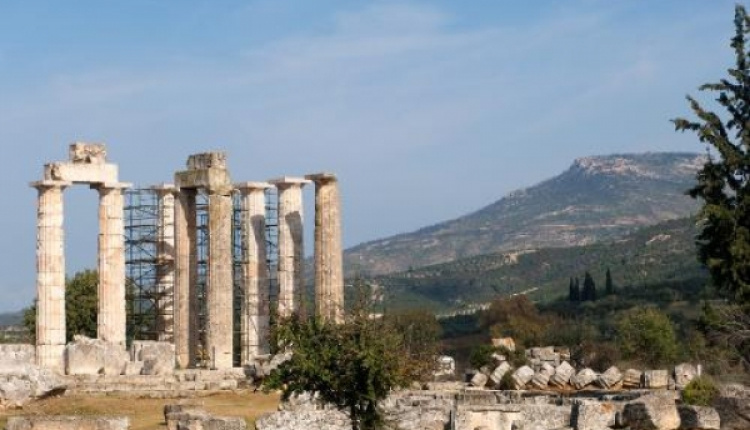Introduction To Nemea
- by XpatAthens
- Wednesday, 18 February 2015

Nemea is a gem of a site, with a restored stadium, a temple with standing columns, and the most appealing and helpful small museum in the Peloponnese. The most famous Panhellenic Games were held every 4 years at Olympia and Delphi, but there were also games every 2 years at Isthmia, near Corinth, and at Nemea, in a gentle valley in the eastern foothills of the Arcadian Mountains, from about 573 B.C. to 100 B.C.
Around 100 B.C., Nemea's powerful neighbor Argos moved the festival from Nemea to Argos itself, putting an end to the Games here.
But, thanks to the Society for the Revival of the Nemean Games, the Games were held here for the first time in 2,000 years on June 1, 1996, when 1,000 contestants from around the world, ranging in age from 12 to 90, participated. The 2000, 2004, and 2008 Games drew even larger crowds, and the next Games are planned for 2012. So, when you visit Nemea, you won't see just the stadium where athletes once contended, but also the site of the new Nemean Games. Contestants run barefoot, as in antiquity, but wear short tunics rather than run naked. If you want to know more about the Nemean Games, contact the Society for the Revival of the Nemean Games (tel. 510/642-5924 in the U.S.; www.nemeagames.gr).
Two excellent site guides should be on sale at the museum: Nemea (10€) and The Ancient Stadium of Nemea (2€). You'll find shady spots to read them both at the site and at the stadium.
Review of The Museum & Ancient Site
The Nemea Museum, set on an uncharacteristically Greek green lawn, is one of the most charming small museums in Greece (labels are in Greek and English). You'll get an excellent sense of the history of the excavation of Nemea and the Nemean Games, as well as the early Christian village here, much of which was built from material pillaged from ancient Nemea.
A display map just inside the museum's main gallery shows all the cities in the Greek world whose coins were found at Nemea and illustrates just how far people came to see these Games. Just as today, most fans sat together -- coins from each city were usually found in the same area of the stadium. You'll see excellent photographs of the excavations as well as enlarged photos of important finds, such as the small bronze figure of the infant Opheltes, in whose honor the Nemean Games may have been founded.
To read more, please visit frommers.com



